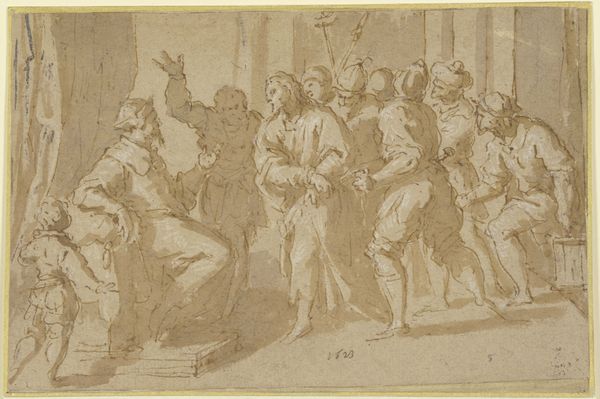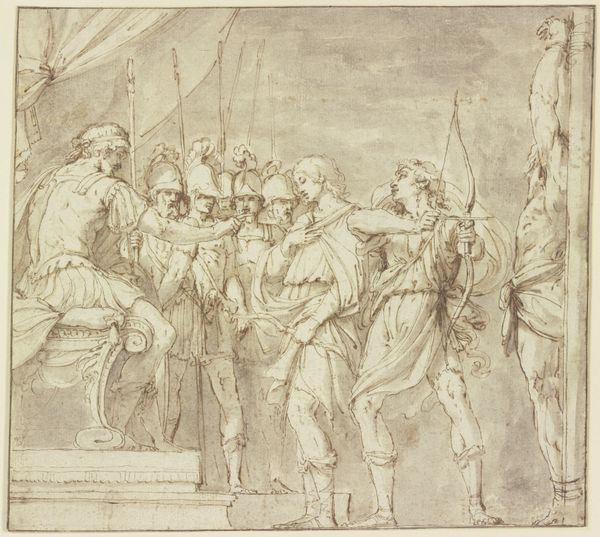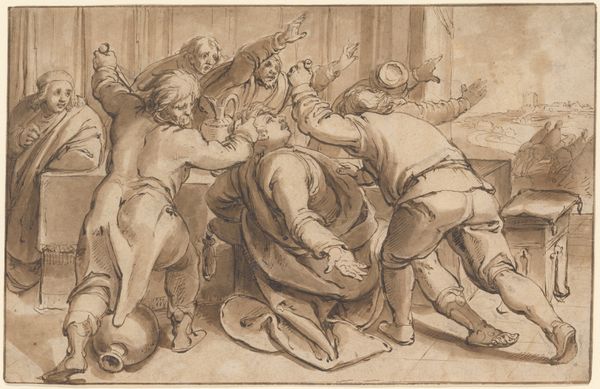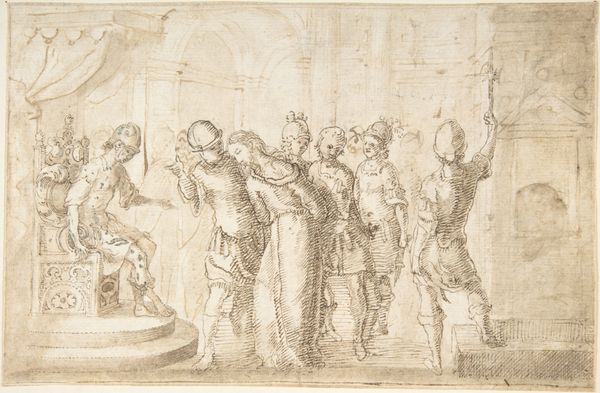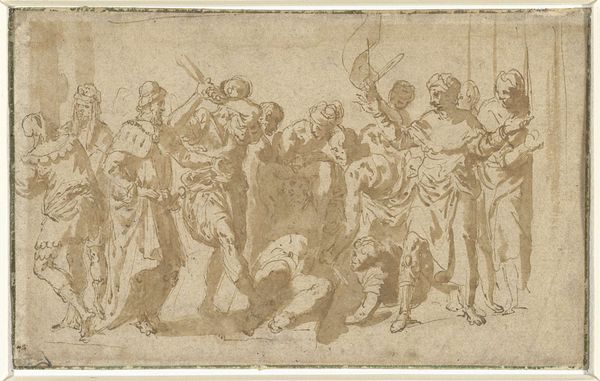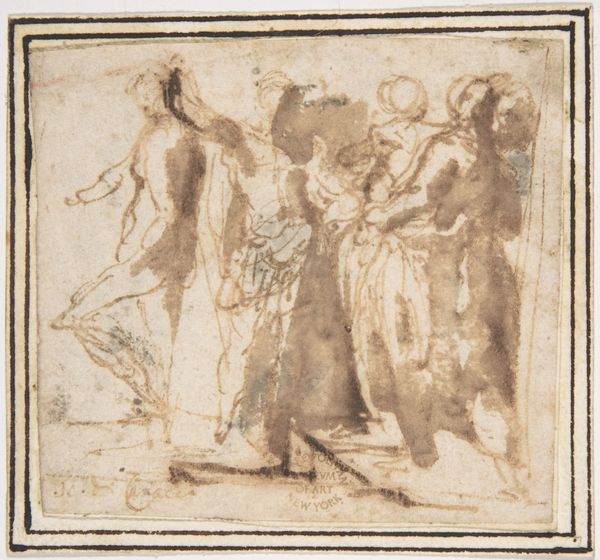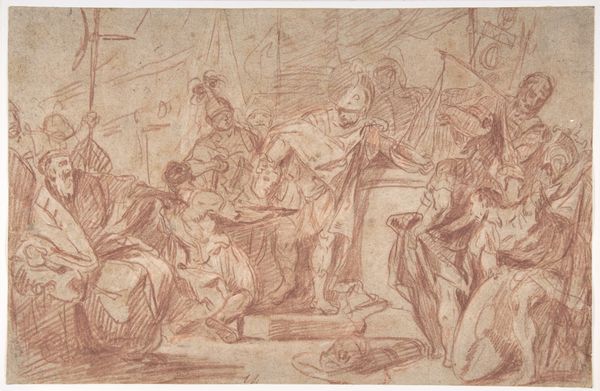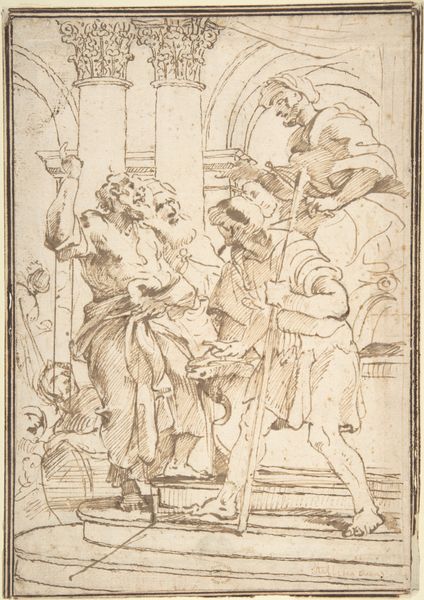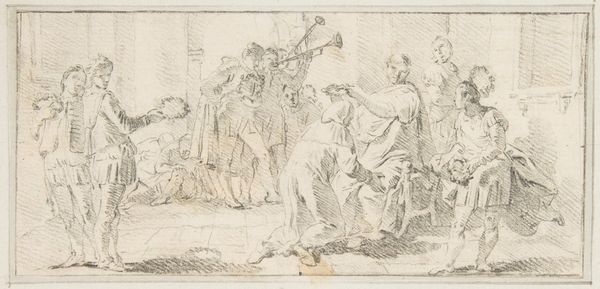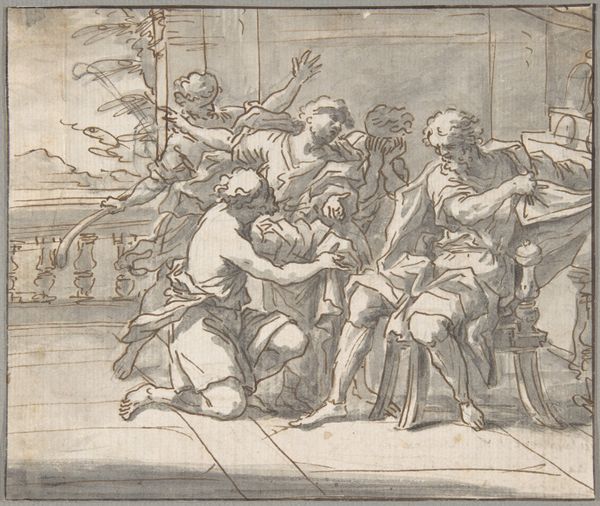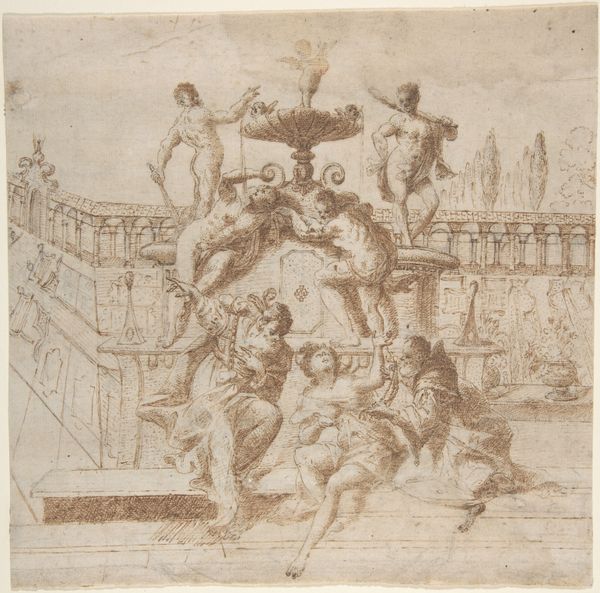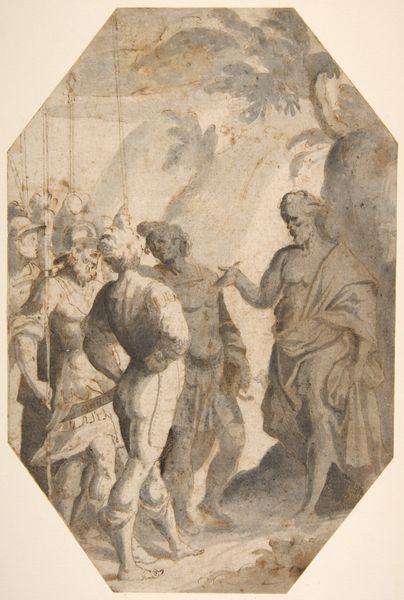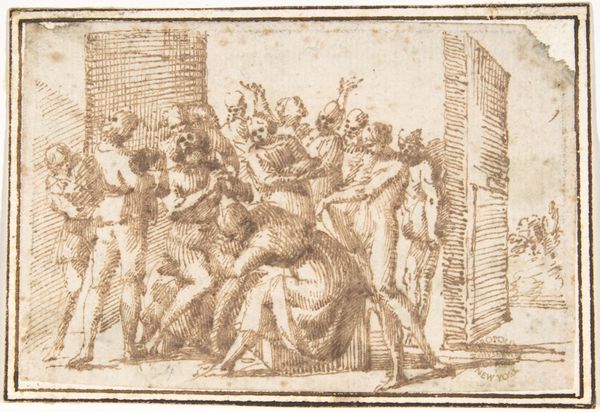
The Departure of Aeneas Announced to Dido? 1624 - 1663
0:00
0:00
drawing, print, ink
#
drawing
#
baroque
#
ink painting
# print
#
etching
#
figuration
#
ink
#
history-painting
Dimensions: 3-1/4 x 4-5/8 in. (8.3 x 11.7 cm)
Copyright: Public Domain
Curator: This is Francesco Allegrini’s "The Departure of Aeneas Announced to Dido?", likely created between 1624 and 1663. It’s an ink and wash drawing, with etching, on paper. What's your initial reaction? Editor: It feels unresolved, even messy. Not in a bad way, but the monochromatic wash blurs the forms. You can sense the drama but the detail is loose. I’m immediately drawn to the raw, handmade quality. Curator: The sketch-like quality belies its function as a preparatory study. These sorts of drawings would have been instrumental in disseminating visual ideas and developing large-scale history paintings. It shows us the artist working through his concept of the scene before the final composition is even realized. Editor: Exactly. Look at how the varying tonal washes define volume and shadow, and how the figures sort of emerge from the ground. The labor of the hand is right there on the surface of the paper. I wonder how Allegrini's studio was set up to create these drawings and how assistants helped, given the speed he probably worked. Curator: This particular subject matter - Dido and Aeneas - was popular at the time. The tragedy, the political allegory of duty versus passion… It's all steeped in meaning and was readily accessible to the educated public. Editor: It definitely plays with those dynamics. The body language speaks to this conflict. Aeneas is literally pulling away and we get Dido reacting. It’s theatrical. Though, thinking about material accessibility again: etchings democratized images, even classical narratives. Prints could be owned and shared. This print, though small in scale, potentially impacted far more people than any grand painting ever could. Curator: That’s a key point. And thinking about its place within collections: drawings like these became highly prized by connoisseurs, elevating what was once seen as mere preliminary work to the status of art objects in their own right. The Met's acquisition underscores the institutional value placed on such pieces. Editor: Agreed. Studying process adds to its interest and our knowledge. For me, looking closely at Allegrini's working process using readily available materials, brings the emotional weight of this narrative more closely in touch with reality and helps make the overall narrative of loss, in this work, even more immediate. Curator: For me, seeing it prompts a consideration of how historical narratives, in this case through art, reflect and shape contemporary political and cultural values.
Comments
No comments
Be the first to comment and join the conversation on the ultimate creative platform.
